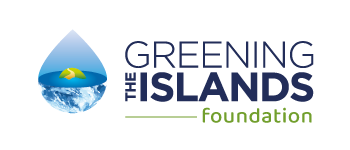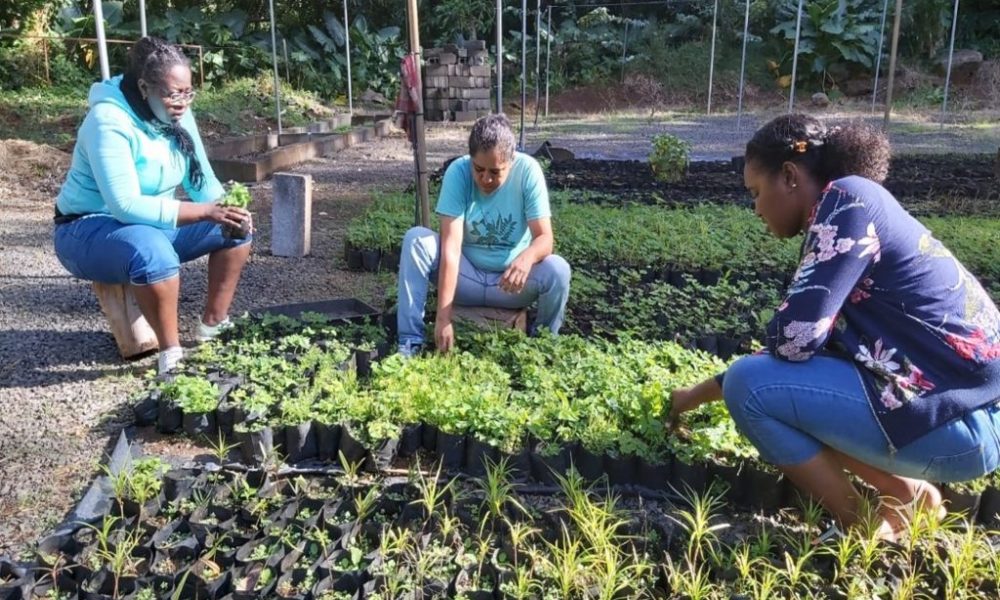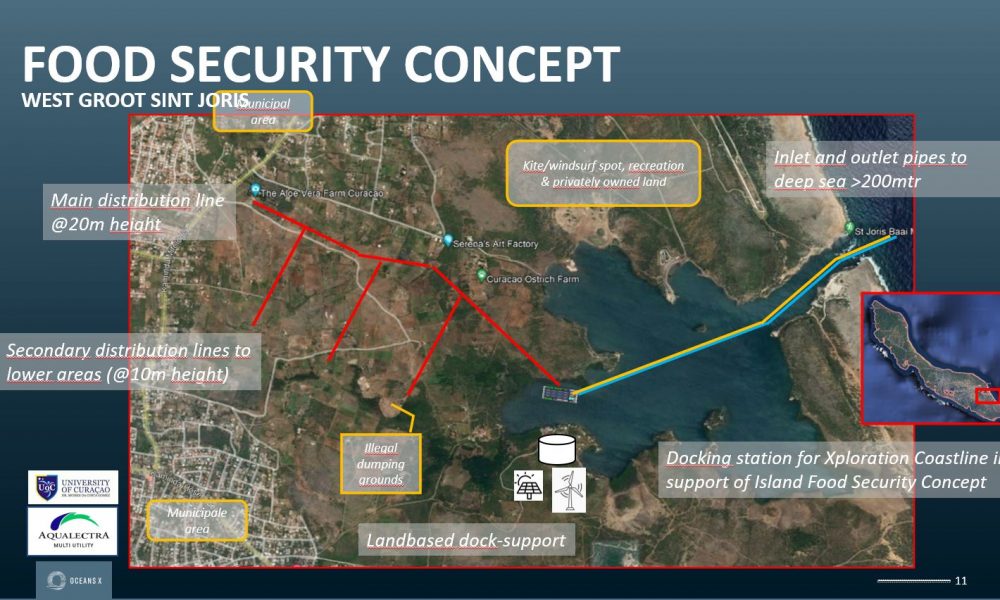Water Conservation and Awareness Centre
Projects

General information:
Island (Region, Province, Country): Malta
Population: 420,000
Budget / cost of the project: Eur2,700,000
Project objectives:
The project aims at the realisation of a Water Conservation and Awareness Centre, which is a first of its type in the Maltese islands. This Centre will serve as a platform to raise local awareness on the challenges facing the water sector in Malta and hence the need for conservation and management of this scarce natural resource.
Project description of activities and specific interventions:
The Malta Water Conservation Awareness Centre will aid Maltese society to better appreciate water (and specifically within the water scarce environment prevailing in the islands) and its utilisation not only for domestic consumption and use or for agricultural irrigation but also as a life-bearing source sustaining the needs of water-dependent, often endemic, ecosystems. Indeed, the project will create an opportunity for the Maltese Islands to demonstrate the integrated cycle of inland waters highlighting the importance of groundwater and the ecological significance of small surface water bodies and features depending on groundwater; a feature that is more easily comprehended in northern Europe and more difficult to appreciate in the dry south.
The realization of the Centre does not simply stop with the construction of the building itself; that would just be the beginning of what one expects to implement. The project of the Centre itself was designed around several activities which were identified as from the early stages of the project. No wonder why the response from the various entities and organizations was received beyond expectations.
The building of the Centre itself is the core space where most of the activities will be held, receiving all sort of ages whilst all age brackets will find something interesting to take part in whether audio-visual, interactive content, interpretation panels, hands on experience and much more.
Visiting the Centre is intended to be more of an experience rather than a simple outing. It is intended to be an interesting knowledge platform through various mediums. Age should be no stumbling block to access the available media and contents intended to target the visitors which might be from all sorts of background. Access was made available throughout the layout and the project is qualified to be fully compliant and disabled friendly place. Targeting our young generations is the main intention. The project aims to have returning visitors due to the continuity and the ongoing activity it is intended to have.

Public outreach, education and awareness efforts and results:
Visitors to the Awareness Centre will initially have the opportunity to observe the outer parts of the Centre, mainly through the Centre’s water heritage trails, which provides information on the natural heritage of the Western region of Malta, where the Centre is located. On entering the Centre, visitors shall be greeted by a member of staff manning the Centre at the Information Desk, where Brochures about the Centre’s main attractions and its objectives are available.
A main attraction in the Centre is a concise audiovisual presentation highlighting the water culture of the Maltese Islands. This audiovisual presents visitors with information on the natural water cycle in the Maltese Islands and highlights the resource properties of water, when correctly managed, and also its potential impacts, when not properly managed, such as in case of droughts and flood related hazards. The theme of waste water recycling, the production and distribution of ‘New Water’ and the production of potable water through the desalination process at reverse osmosis plants also feature in the presentation.
Visually, the visitor can also enhance his/her experience and better understand these and other concepts related to water management through the display panels embellishing the main exhibition hall of the Centre. The water learning experience offered in the Centre shall be further translated into interactive, digital e-content through animation, images and games. This concept of informing through entertainment would undoubtedly be highly compelling to visiting schoolchildren, for whom the Centre is primarily established, and the general public alike.
In the case of school visits, the educational aspect will be organised by the Centre’s management in collaboration with the ‘Eko-Skola’ initiative within the Ministry for Education and Employment. A specific hands-on area shall be dedicated for water conservation related activities coordinated by the Centre’s staff and the teachers accompanying the students. These activities can include team-based learning methods, quizzes, fieldwork sessions and use of water monitoring equipment, depending on age-group and in synergy with the National Curriculum for education.
Economic value added and how calculated:
The Malta Water Awareness Conservation Centre forms part of the stakeholder engagement programme planned under the implementation programme of Malta’s 2nd River Basin Management Plan. This 2nd management plan develops the measures necessary for the achievement of the environmental objectives for natural waters in the Maltese, with particular focus on the achievement of good quantitative status in all bodies of groundwater by 2021. The 2nd RBMP introduces a comprehensive approach merging together water demand management and water supply augmentation measures, the implementation of which is supported by a focused stakeholder engagement campaign, aimed at achieving added implementation value from the identified measures. The Water Awareness Conservation Centre is a central feature of this National Water Conservation Campaign. From an economic perspective, therefore the Awareness Centre should be considered as part of this comprehensive ‘Programme of Measures’ which a positive ENPV and a Benefit-Cost Ratio of 1.03.
In addition to its public engagement and educational aspects, the Centre and its adjoining grounds will also serve as a catalyst to support the regeneration of the Nigret area in the town of Rabat. This will be achieved firstly by the grounds of the Centre itself which will transform a poorly landscaped area located within a social-housing estate. Furthermore, the Centre will also serve as a ‘gateway’ through which additional investments will be sourced to highlight the cultural and natural heritage of the area. In this regard, it is noted that the first additional project which will create a visitors (interpretation) area and trekking trail in the nearby Qlejjgha Valley system has already been secured, and will be funded by the ERDF. Another project aimed at tackling the management of rainwater runoff in the area through the adoption of green infrastructure has also been submitted for funding under the INTERREG Programme. These and other initiatives aim to generate a flow of visitors to the area which will support the generation of local economic activities.
From a financial perspective, it is noted that the project is financed under the EEA-Norwegian Financial Mechanism 2009-2014.

Ecological and social project outcomes: The Malta Water Awareness Conservation Centre aims to develop an increased understanding in the Maltese public on the importance of the correct management of water resources. The project aims to achieve this increased understanding through the use of indirect educational tools using digital e-content, games and augmented reality applications. This project is an integral part of a national water conservation initiative being currently undertaken in the Maltese islands, in support of the implementation of Malta’s 2nd River Basin Management Plan. The Awareness Centre thus contributes towards the achievement of good status conditions in Malta’s water environment. Furthermore, the Centre also includes information points on the natural water features which can be found in western Malta and will progressively serve as a ‘gateway’ to these features through the planned development of heritage and natural trails in the region.
It is also worth noting that the Centre itself includes a number of green measures aimed at reducing its water use footprint. A rainwater harvesting reservoir (of circa 500m3 capacity) has been developed beneath the centre with the aim of collecting all rainwater runoff generated within the project grounds. The harvested rainwater will be utilised for secondary purposes in the Centre and for the irrigation of landscaping in the surrounding grounds. In order to minimise water demand, all water fittings in the Centre have been selected with a high water use efficiency level, a high tech irrigation system has been installed whilst low water requiring endemic vegetation has been selected for the landscaping features of the Centre’s grounds. The Centre itself will include information points on these water efficiency features to increase awareness of these green solutions in the Centre’s visitors.
Furthermore, the Centre is also contributing to the regeneration of the Nigret area in Rabat. This both through the development of a landscaped area with recreational amenities in a previously neglected area for the benefit of residents and visitors alike, and also by drawing an increased number of visitors to the area which supports the local economic activity.
Detailed explaination of the submitted photos: The strategic location of the project which in a few hundreds of metres leads to one of the island’s vital water reserves was crucial, followed by the educational aspect especially in the subject of water which our country lacks and finally, the holistic regeneration of the area close to a Government social housing estate which had long lacked from being given some sort of attention.
The project is divided into four main activities as outlined in the attached images;
1- to create a recreational landscaped space for the surrounding residential blocks as well as for outsiders including reading areas and seating,
2- install outdoor playing and scientific equipment as well as informative panels inviting visitors to understand further the value of water for such a small island,
3- creating an all-year-round artists exhibit space where they can express their creativity through arts and installations with the subject of water; this keeps the place an all-time interesting whilst offering something different through each and every returning visit,
4- an interactive Information Centre for those who are eager to learn more about the subject. The Centre will provide an audio-visual presentation, augmented reality technology as well as printed boards to make sure that older generations who might not be technology-friendly can still read or visualize what needs to be communicated. School visits is another main target.
The above-mentioned explanations and dedicated spaces are meant to work individually but in a holistic manner. These spaces aims to give that invaluable intrinsic aspect which neither money nor anything else can value; that to bring up a generation aware of this precious water resource for our island. This is done by targeting the small ages through playing and scientific equipment installed around the landscaped areas. For the bigger ages, they can further explore and ‘play’ with more elaborate scientific pieces such as the rain water measuring equipment whilst for the elder ones and their parents/guardians they can make use of the augmented reality tablets and the informative panels within the Centre.










